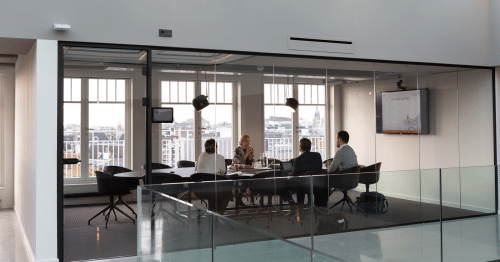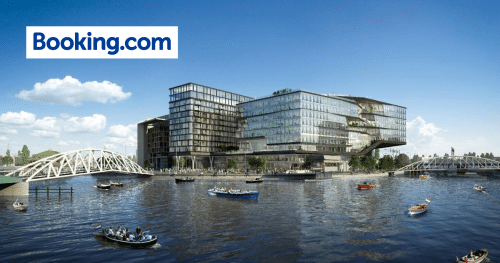Smart building technology is rapidly transforming the landscape of modern infrastructure. By 2026, it is projected that there will be 115 million smart buildings globally, underscoring the significant shift towards more intelligent and efficient building management systems. This technology integrates advanced sensors, IoT devices, and data analytics to optimize various aspects of building operations, from energy consumption to occupant comfort.
In this article we will understand Smart Buildings and its key features, the drivers of smart building adoption and how smart building technology enhances facility management. Keep reading to explore how it is reshaping facility management and creating smarter workplaces.
Understanding Smart Building Technology
Key Features of Smart Buildings
Smart buildings are characterized by their integration of advanced technologies that enhance operational efficiency and occupant experience. One of the primary features is the use of IoT sensors and devices, which collect real-time data on various parameters such as temperature, humidity, occupancy, and energy usage. This data is then analyzed to optimize building performance, taking into account different branches:
- Energy consumption: Adjusting lighting, HVAC systems, and other energy-intensive processes based on real-time needs, leading to lower energy costs and reduced carbon footprint. This is particularly important as businesses strive to meet sustainability targets and reduce their environmental impact.
- Indoor air quality: Ensuring high air quality standards is critical in both residential and commercial spaces, contributing to the well-being of occupants and reducing risks related to poor ventilation.

- Space utilization: Monitoring occupancy patterns to improve workspace layouts, meeting room usage, and overall building capacity. Effective space management can lead to reduced overhead costs by ensuring that every square meter is used efficiently.
- Maintenance efficiency: Predictive maintenance of equipment and systems, minimizing downtime and reducing operational costs. Predictive maintenance uses historical and real-time data to predict equipment failures before they happen, saving costs and preventing operational interruptions.
- Security and access control: Enhancing building security by integrating smart access systems and real-time monitoring. Smart buildings can dynamically adjust access control protocols, improving safety while maintaining convenience for authorized personnel.
- User comfort: Customizing temperature, lighting, and other environmental factors to suit the preferences of individual occupants. Occupant satisfaction is a growing concern in facility management, and personalized environments contribute to higher productivity and comfort.
- Sustainability performance: Reducing resource waste and optimizing water usage, aligning with sustainability goals. Sustainability initiatives are crucial for businesses aiming to reduce their carbon footprint and comply with stricter environmental regulations.
Overall, the integration of these technologies not only improves the functionality and sustainability of buildings but also enhances the well-being and productivity of occupants. The ability to collect, analyze, and act on real-time data enables smarter decision-making, leading to more efficient and adaptive building environments.
Drivers of Smart Building Adoption
The adoption of smart building technology is driven by several compelling factors:
Rising energy costs
A significant motivator is the potential for substantial reductions in energy consumption and operating costs. According to recent data, 71% of building owners and managers recognize the importance of smart building technology in achieving these efficiencies. This awareness is crucial as energy costs continue to rise and sustainability becomes a priority for businesses worldwide.
Smart buildings utilize data-driven insights to optimize energy usage, reducing wastage and ensuring that systems like heating, cooling, and lighting only operate when necessary. This can lead to significant cost savings over time, especially for large commercial properties where energy costs can be a major expenditure. Moreover, the push toward renewable energy integration within smart buildings can further reduce dependency on non-renewable energy sources.
Expectations of Occupants
Another key driver is the enhanced occupant experience that smart buildings offer. By leveraging advanced sensors and IoT devices, these buildings can provide a more comfortable and productive environment. Intelligent HVAC and lighting systems, for instance, adjust in real-time to meet the needs of occupants, improving overall satisfaction and well-being.
In today’s competitive market, where employee well-being and productivity are prioritized, providing a comfortable and personalized environment is crucial. Smart buildings can automate and adjust environmental conditions to suit the preferences of individual occupants or specific zones within the building, ensuring comfort without manual intervention.
Demand for healthy buildings
Building occupants expect a safe and healthy space. Property managers need to ensure that elements like air quality and temperature are kept at ideal levels, and IoT-based building automation helps simplify this process.
Healthy building environments are essential for fostering occupant well-being and ensuring regulatory compliance. As concerns around indoor air quality grow, especially in light of global health challenges, property managers are under increasing pressure to deliver environments that promote safety and health. Smart buildings provide the tools to monitor and adjust indoor conditions in real-time, ensuring that buildings meet the highest standards for occupant health.
Demand for proactive facility management
The integration of smart technology in buildings supports proactive facility management. Centralized platforms enable real-time monitoring and control of various building systems, facilitating predictive maintenance and efficient resource allocation. This not only extends the lifespan of building assets but also minimizes downtime and operational disruptions.
Proactive facility management also involves using insights from data analytics to streamline operations and optimize resource allocation. By continuously monitoring building systems, facility managers can identify inefficiencies and implement corrective actions, leading to smoother and more cost-effective building management.
How Smart Building Technology Enhances Facility Management
Smart building technology significantly enhances facility management by providing real-time data and analytics that enable more efficient and effective operations. Integrated sensors and IoT devices continuously monitor various building parameters, such as energy usage, occupancy, and environmental conditions. This data is crucial for facility managers to make informed decisions and optimize building performance.
One of the key benefits is predictive maintenance. By analyzing data from sensors, facility managers can identify potential issues before they become critical, reducing downtime and extending the lifespan of building assets. This proactive approach not only minimizes maintenance costs but also ensures a more reliable and safe environment for occupants.
Additionally, smart building technology supports efficient space management. Real-time occupancy data allows for better utilization of available space, ensuring that areas are used effectively and reducing the need for additional real estate. This is particularly valuable in dynamic workplace environments where space needs can change rapidly.
Moreover, the automation of energy management ensures that systems operate at optimal efficiency, cutting down on unnecessary energy consumption and lowering operational costs. Facility managers can set predefined conditions, allowing for automated adjustments that adapt to changing building requirements throughout the day.
Overall, the integration of smart building technology into facility management practices leads to improved operational efficiency, cost savings, and enhanced occupant satisfaction, aligning with Spacewell’s mission to create smarter, more sustainable workplaces.
Smart building technology; a significant advancement
In summary, smart building technology represents a significant advancement in the way we manage and interact with our built environments. By integrating IoT devices, advanced sensors, and data analytics, these systems optimize energy consumption, enhance occupant comfort, and streamline facility management. The real-world examples and benefits discussed illustrate the tangible impact of smart buildings on operational efficiency and sustainability.
As we move forward, the adoption of smart building technology will continue to grow, driven by the need for cost savings, improved occupant experiences, and proactive facility management. Spacewell remains committed to leading this transformation, fostering smarter, more inclusive, and sustainable workplaces for the future.











